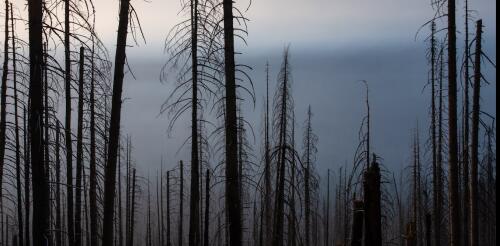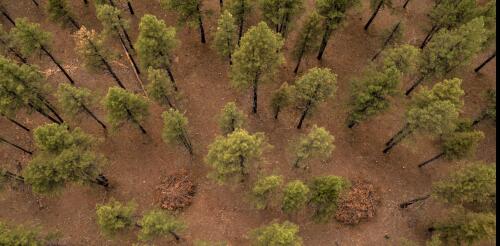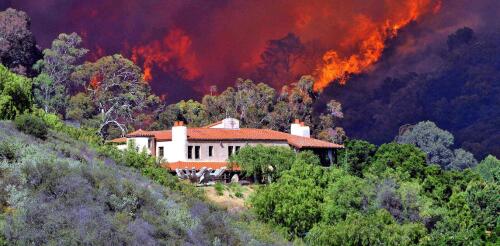US Forest Service
In the U.S., wildland firefighters are able to stop about 98% of all wildfires before the fires have burned even 100 acres. That may seem comforting, but decades of quickly suppressing fires has had unintended consequences. Fires are a natural part of many landscapes globally. When forests aren’t allowed to burn, they become more dense, and dead branches, leaves and other biomass accumulate, leaving more fuel for the next fire. This buildup leads to more extreme fires that are even harder to put out. That’s why land managers set controlled burns and thin forests to clear out the undergrowth. However, fuel accumulation isn’t the only consequence of fire suppression. Fire suppression also disproportionately reduces certain types of fire. In a new study, my colleagues and I show how this effect, known as the suppression bias, compounds the impacts of fuel accumulation and climate change. What happened to all the low-intensity fires? Most wildfires are low-inten...
A wet winter and spring followed by a hot, dry summer can be a dangerous combination in the Western U.S. The rain fuels bountiful vegetation growth, and when summer heat dries out that vegetation, it can leave grasses and shrubs ready to burn. Drier than normal conditions, like many regions are experiencing in 2024, also raises the fire risk. In years like this, controlled burns and prescribed fire treatments are crucial to help protect communities against wildfires. Well-staffed fire crews ready to respond to blazes are essential, too. The National Oceanic and Atmospheric Administration Climate Prediction Center’s long-range seasonal forecast for summer 2024. NOAA However, on Feb. 8, U.S. Forest Service Chief Randy Moore told agency employees to expect budget cuts from Congress in 2024. His letter was thin on details. However, taken at face value, budget cuts could be interpreted as a reductio...
The U.S. government is investing over US$7 billion in the coming years to try to manage the nation’s escalating wildfire crisis. That includes a commitment to treat at least 60 million acres in the next 10 years by expanding forest-thinning efforts and controlled burns. While that sounds like a lot – 60 million acres is about the size of Wyoming – it’s nowhere close to enough to treat every acre that needs it. So, where can taxpayers get the biggest bang for the buck? I’m a fire ecologist in Montana. In a new study, my colleagues and I mapped out where forest treatments can do the most to simultaneously protect communities – by preventing wildfires from turning into disasters – and also protect the forests and the climate we rely on, by keeping carbon out of the atmosphere and stored in healthy soils and trees. Wildfires are becoming more severe Forests and fires have always been intertwined in the West. Fires in dry conifer forests...
Humans have learned to fear wildfire. It can destroy communities, torch pristine forests and choke even faraway cities with toxic smoke. Wildfire is scary for good reason, and over a century of fire suppression efforts has conditioned people to expect wildland firefighters to snuff it out. But as journalist Nick Mott and I explore our new book, “This Is Wildfire: How to Protect Your Home, Yourself, and Your Community in the Age of Heat,” and in our podcast “Fireline,” this expectation and the approach to wildfire will have to change. Over time, extensive fire suppression has set the stage for the increasingly destructive wildfires we see today. The problem with fighting every fire The way the U.S. deals with wildfires today dates back to around 1910, when the Great Burn torched some 3 million acres across Washington, Idaho, Montana and British Columbia. After watching the fire’s swift and unstoppable spread, the fledgling Forest Service developed...



